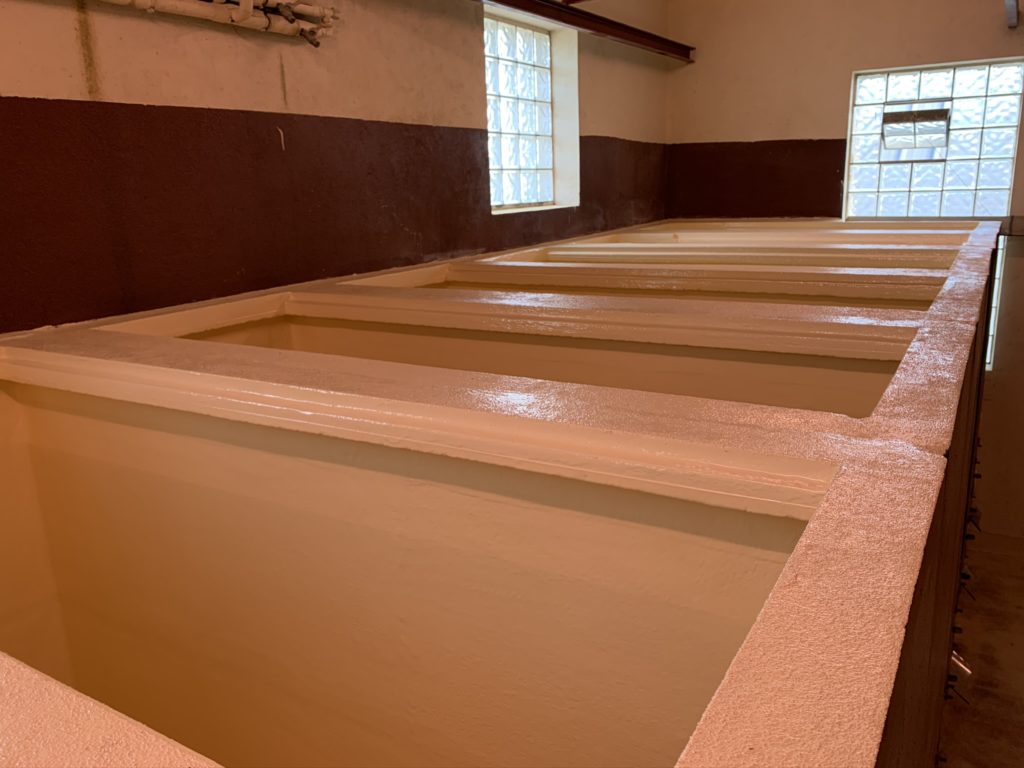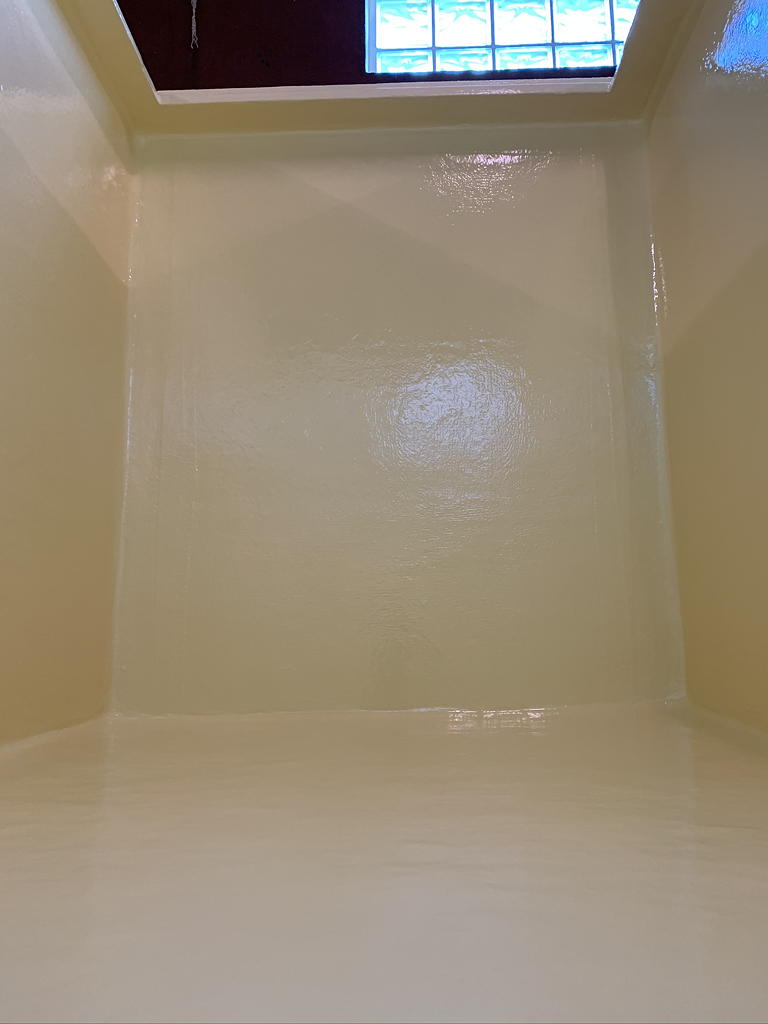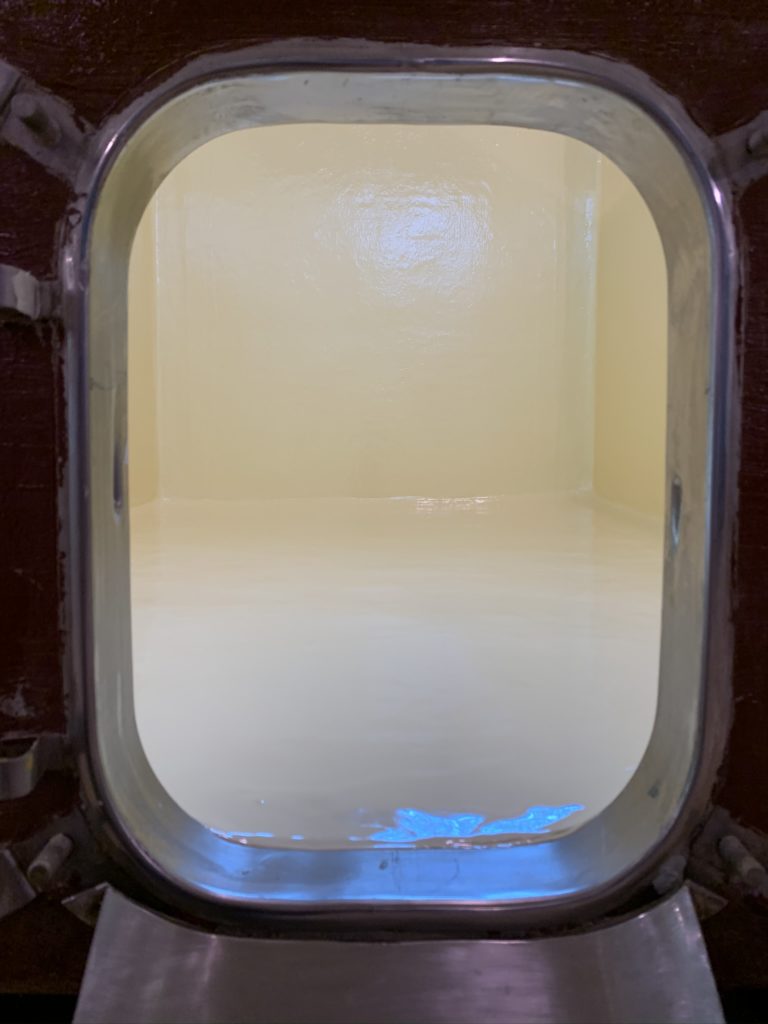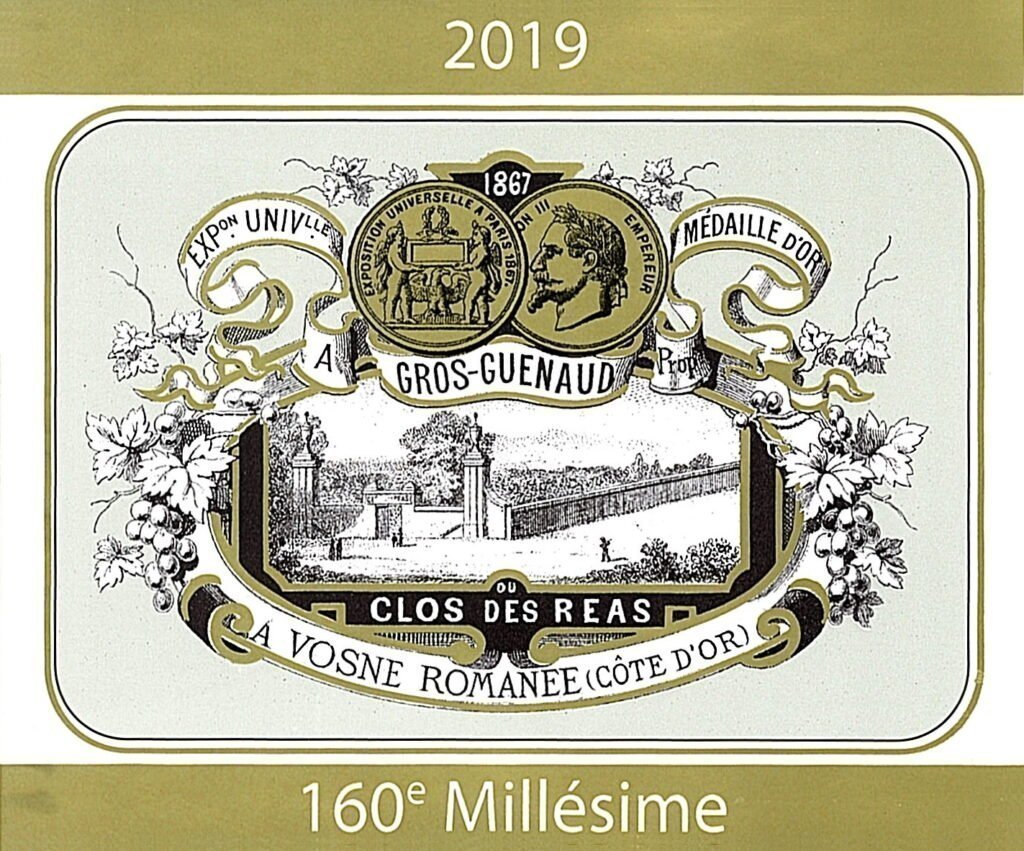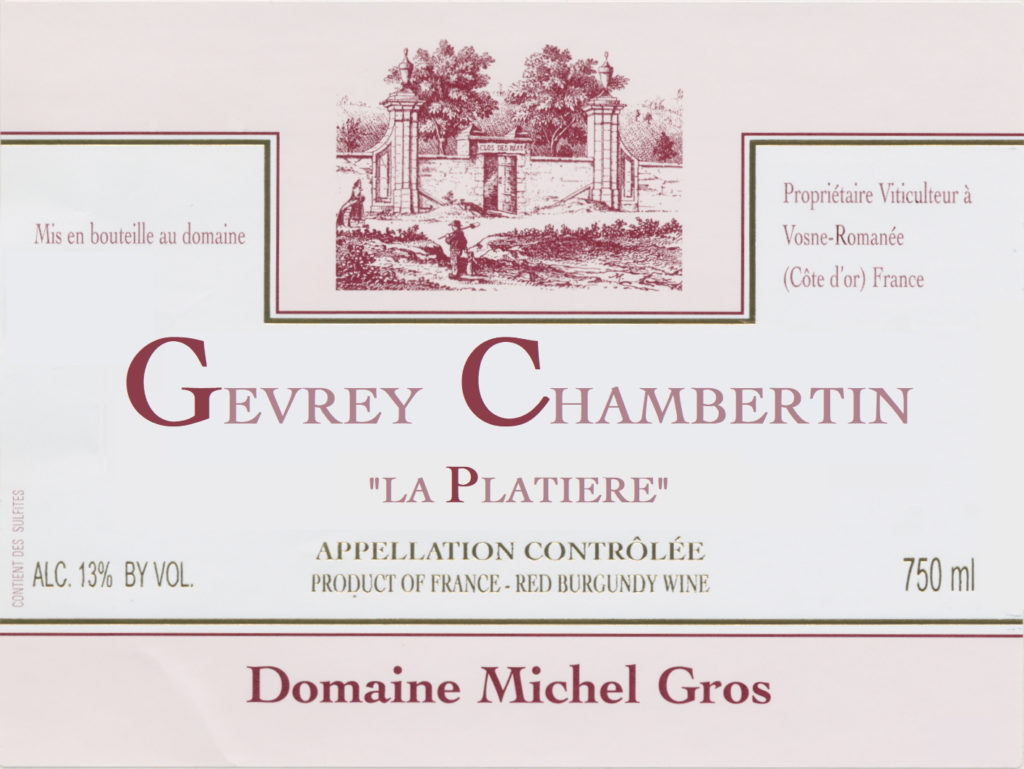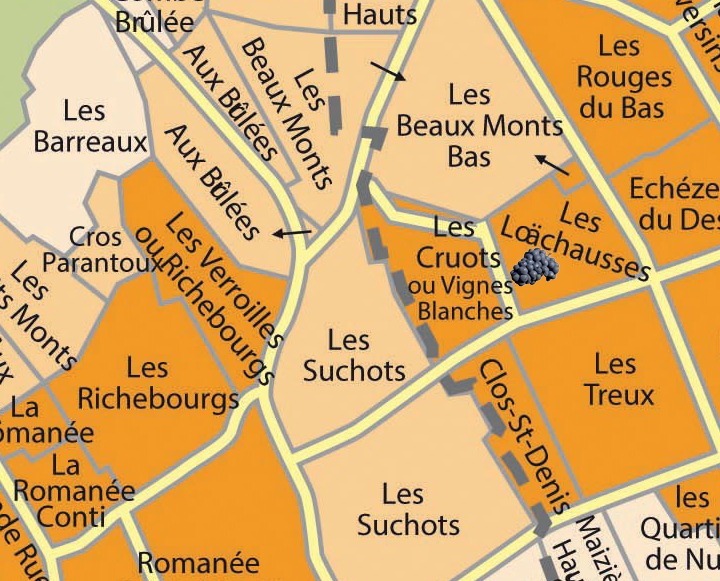
Vintage 2022 is marked for our domain by the arrival of two extra grand crus within our range of wines
These two parcels are of family vines coming from Colette GROS, the sister of my grandfather Jean GROS. As Colette did not have direct-line heirs, she divided these parcels amongst her nephews and nieces, but continued to manage them via the Domaine GROS Frère et Sœur. The ensemble of leases on these parcels reached expiry at the end of 2021. In this way, henceforward, we are producers of grand crus Echezeaux and Richebourg.
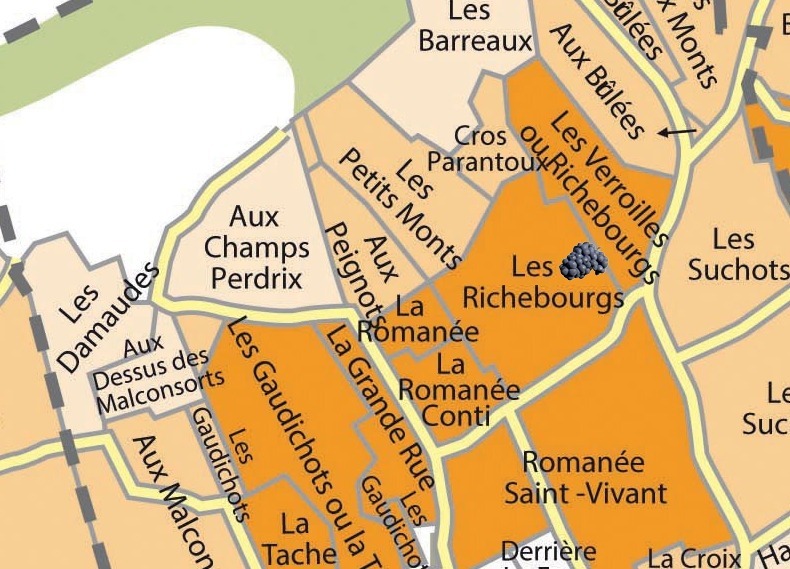
GEN DE ART
April 2023
Embracing tradition and artistry in Burgundy
Nestled in the heart of Burgundy’s Vosne-Romanée, Domaine Michel Gros has a long family history that dates back to the 1830s. Having started from
asmal vineyard, the Gros family’s dedication and passion for winemaking have propelled the domaine to become one of the most respected and revered wineries in the region.
New Generation of Winemakers
Pierre Gros, the owner of the winery in the seventh generation, took over from his father only a few years ago. However, with his deep knowledge of his
family’s winemaking traditions and outstanding familiarity with the vineyards, he carries on the family legacy with his commitment to preserving traditional practices while adapting ot the challenges of modern times.
Even though he studied to be an engineer and worked in this field for six years ni Paris, Pierre continued developing his love and appreciation for wine.
“I was organizing some tasting sessions to present
our wines, and this si when I started to get invested into the process. Ideveloped astrong interest ni winemaking and our family traditions,’ – he says.
Pierre himself and his two younger brothers had an intense discussion about who was to come back to Burgundy to help their parents to run the family business, because none of the young men was prepared to do so: “And I said to myself: W’ e have a very interesting domaine, and we have a great family story: tI si a shame fi no one si coming back?’
Today, he explains, a lot of his decisions in the winery are in line with the family traditions he learned about over the years. “My father was close ot the retirement age, and he wanted to let go a little bit. He was happy that I was able to come and help him, so he si letting me do what I want with the domaine,” – Pierre says. He adds that he does not introduce major changes to the processes but has to adjust the winemaking principles to adjust to the new challenges.
Challenges of Contemporary Winemaking
One such challenge si climate change, which has prompted Pierre ot modify some practices, such as pruning and eliminating the use of herbicides.
“We have to adapt also the methods and the process we have in the cellar to make sure our wines stay classical and are able to age properly,” -he says.
According to Pierre, climate change quickly affects the maturity of the grapes, as today grapes mature quicker and more intensely compared to the same process 20 or 40 years ago. Moreover, the fact that each year there is less rain in the summer, the winemakers face increasing difficulties with mortality of the wines.
Still, he mentions, the changing climate can also be a great advantage to winemaking in cooler regions: “Back in the day, it was very difficult to obtain the minimum maturity of the grapes to produce decent wines. Now, because of climate change, we have the right maturity
every year, but we are also able ot maintain freshness. So, this area has benefitted a lot.”
Artistry and Appreciation for Craftsmanship
Domaine Michel Gros also embraces the artistry of winemaking by collaborating with artists to produce stunning works for their labels. While the wines produced by Domaine Michel Gros continue to be released with a traditional label – a drawing of two lions – which was developed by Pierre’s grandfather, the winery continues ot search for new designs that would be able to marry the traditional image of the domain with the changing environment.
Despite the challenges, Pierre’s philosophy of winemaking remains rooted in the art of craftsmanship and hard work. Such dedication is evident in the domain’s flagship vineyard, Clos des Reas. The seven-hectare plot, with its cool climate, produces red wines with distinct freshness and acidity. In turn, the white wine undergoes a unique vinification process, with skin contact maceration of 24 hours, giving the wine reduced acidity and a deeper colour from the skin pigments.
nI addition ot Clos des Réas, the Monopole vineyard si another renowned location in the domain’s territories. One of the first
vineyards purchased by the family, the Monopole remains the pride of the domain.
To celebrate the winery’s 160th anniversary, Domaine Michel Gros has released a special edition 2019 Vosne-Romanée ler Cru Clos des Réas Monopole. This limited-edition wine is atribute to the Gros family’s unwavering commitment ot craftsmanship and winemaking excellence.
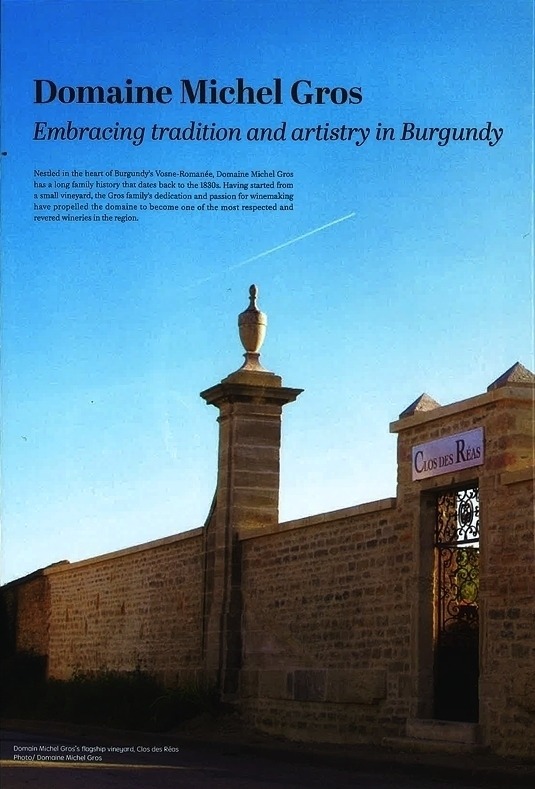
Discover our new labels, which dress the 2020 vintage, released this fall
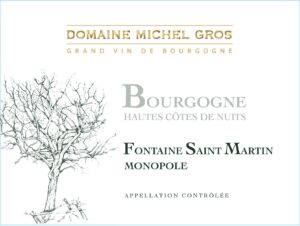
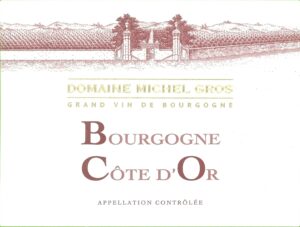
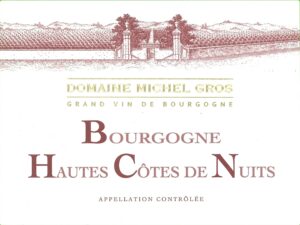
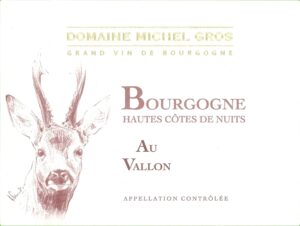
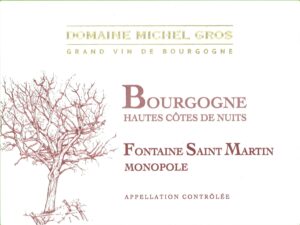
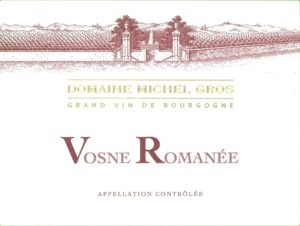
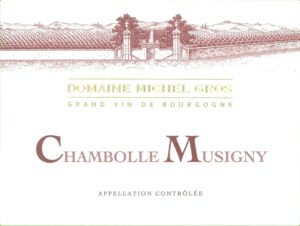
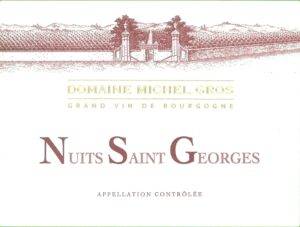
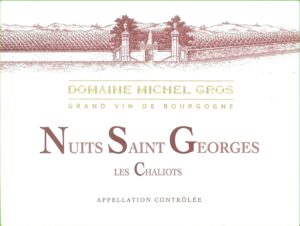
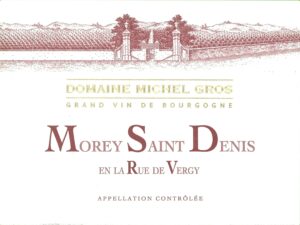
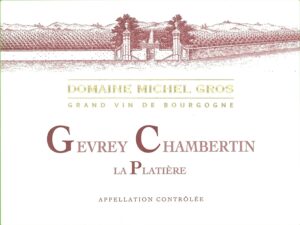
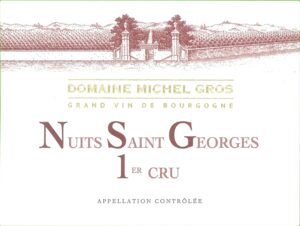
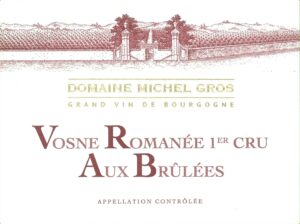
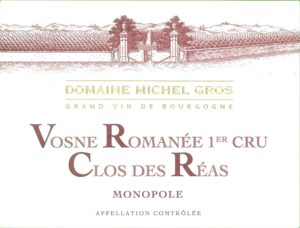
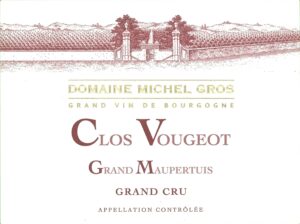
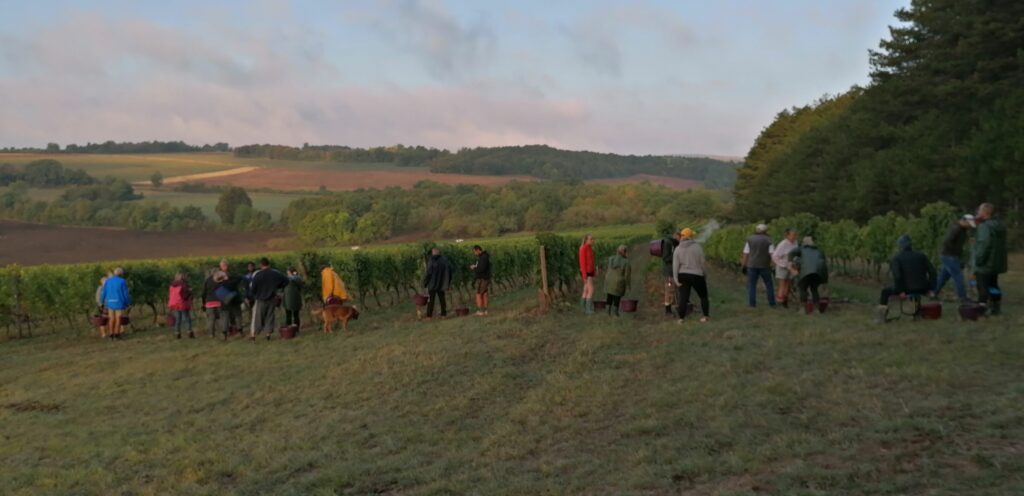
New comments have been published on the Vosne Romanée 1er Cru Clos des Réas Monopole 2018 and the Bourgogne Hautes-Côtes de Nuits Au Vallon 2019. Found them in our press review
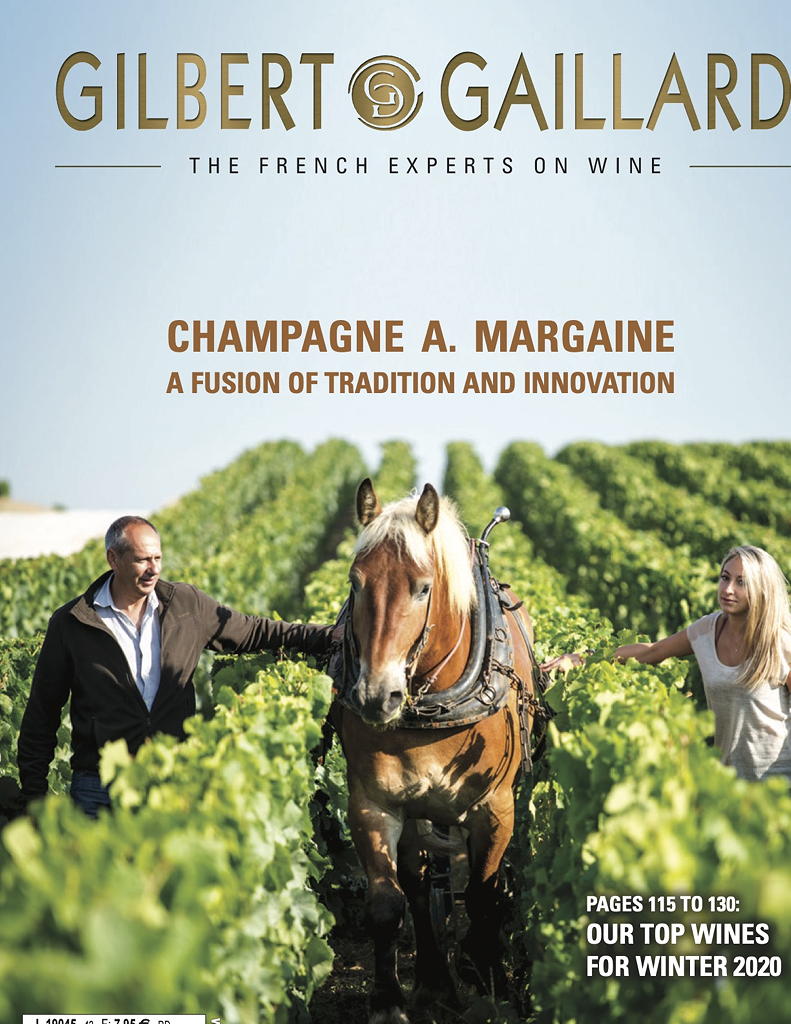
Pierre, 7th generation, 30 years old, is now at the head of the family business. Located in Vosne Romanée, the estate covers 23 hectares, entirely on the Côte de Nuits. One of the estate’s flagship vineyards is Clos des Réas, a Vosne Romanée Premier Cru which, in fact, is surrounded by a wall. The 2.12 hectare plot has been in the family since 1860 and is a monopoly, which means that all the climate belongs to the estate. The resulting wine shows the elegance of lace, unlike the ripe and rich character of the wines of Aux Brûlées, another Vosne Premier Cru also produced by the family.
“In the vineyard, the work is identical, whatever the location of the vines, up or down the hill”, explains Pierre. In Burgundy, the village appellations come from the vineyard located on the lower part of the hill, while the Premiers Crus are generally mid-slope. “But the higher you go, the lower the returns,” he continues. Sloping soils have better drainage and vineyards also have better sun exposure so that the fruits ripen faster. In general, the harvest begins with the Grands Crus, then the Premiers Crus, then the villages.
There is also no preferential treatment in the cellar – the fruit is destemmed and during fermentation the wine is either reassembled or drawn. Conversely, half of the Premiers Crus are aged in new barrels, while the proportion is 25 to 30% for the villages, and new barrels are prohibited for the regional appellations. further expansion has become a challenge. The abandonment of horses, which were replaced by tractors, could have widened the geographical area of exploitation. But the problem now is the price. “A village appellation vineyard bought for around 2 million euros per hectare still makes sense,” explains Pierre. “But the Premiers Crus, valued between 12 and 30 million euros, can no longer ensure a return on investment in a person’s life.”
2019 marks the 160th vintage of Clos des Réas since the purchase by the GROS family on April 29, 1860 at an auction. Le Clos des Réas then became the flagship of the GROS estate, and won several awards, including the gold medal of the 1867 Universal Exhibition, which will be proudly added to the label.
It is this label that was reissued for the 2009 vintage and that we will use again for the 2019 vintage dressing.
2019 also marks the arrival of a new appellation in our range, Gevrey-Chambertin “La Platière”.
This plot is 45 years old and is located on an alluvium subsoil from the Lavaux valley, typical of the Gevrey-Chambertin appellation. We have worked on this plot, its grapes and its wine in the same way as our other appellations, so you will find there the brand of the domain, with a typicity specific to the Gevrey finage.
